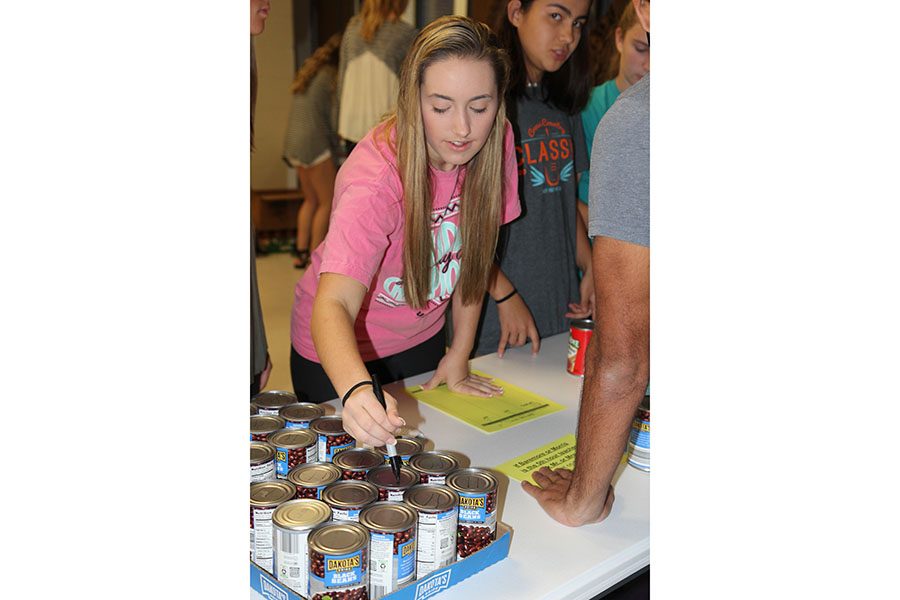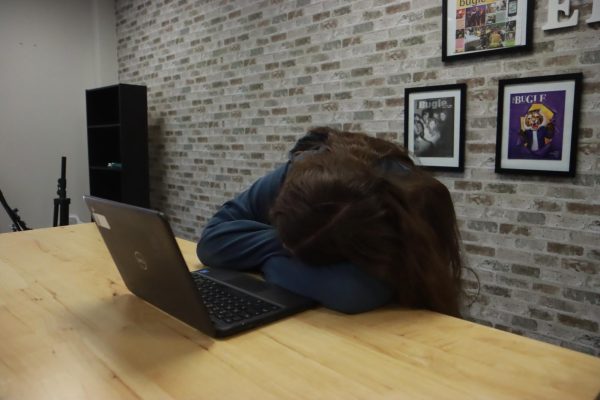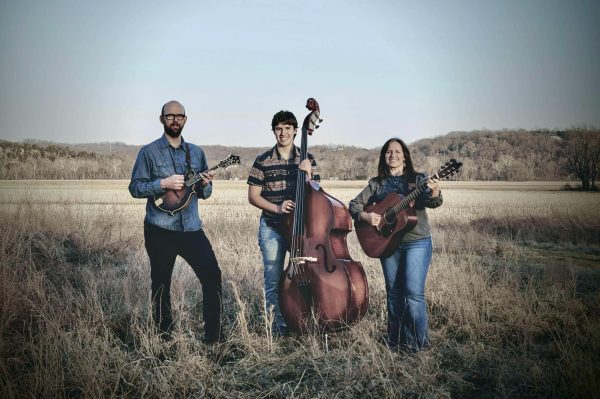Know/inform/care: March 9, 2017
Maddie Ripson (11) helps mark and collect cans for the annual EHS canned food drive, Nov. 3. This is a school-wide project that collects cans for a specific charity of StuCo’s choosing.
Local
Know: Students across the St. Louis area, from schools like Seckman to Windsor High School, collected donations and food or anything else that helps to support those who lost everything in the Perryville tornado, Feb. 28.
Inform: After a tornado devastated the town of Perryville, 50 students from Seckman and Windsor High School decided to donate food and other supplies to the affected residents. The National Weather Service classified the tornado as an EF-4 Twister, claiming the life of one person and destroying over 100 homes. The fundraiser, known as the annual March for Hunger, usually collects donations for Arnold and Jefferson County residents, but when the tornado hit a local area, the teens changed the recipients. The students were able to fill two vehicles with food.
Care: The annual EHS food drive collected 25,116 of cans to donate to a charity of StuCo’s choosing. Just like the teens that attend Seckman and Windsor High School, students realize the importance of giving to and helping out others that are in need. This canned food drive, like the March for Hunger event, is a community-wide fundraiser that is teaching teens of this generation how to help those that are coping with loss, hunger and just not having enough to put out on the table.
National
Know: After the suspension of an original Executive Order by a Federal court because of a pending legal challenge by many Civil Rights groups, President Donald Trump has issued a second executive order that banned the entry of any citizen into America from the six following countries: Iran, Libya, Somalia, Sudan, Syria and Yemen, March 5.
Inform: The first executive order set off mass protests and riots across the U.S, causing delays in many airports such as LAX. To move away from the chaos of the first executive order, Trump voided some clauses in the second order. First, Iraq is no longer on the list of countries subjected to a 90-day travel ban. The revised order still seeks to curb the number of refugees allowed into the United States — no more than 50,000 will be allowed in in 2017 compared to the 85,000 refugees that were allowed in in 2016 — however, it no longer places a blanket ban on Syrian refugees trying to enter the United States. Instead, refugees, including those from Syria, will be subjected to a 120-day suspension of the refugee program.
The layout of the second order was more traditional and tailored to the legal rights of the Constitution but it still resembles the original executive order. This new plan will be in place for 90 days and according to Senior Administration Officials, countries will be added or dismissed from the list based on the U.S.’s screening procedures of incoming travelers and the countries cooperation with security standards beginning March 16.
Care: After the release of the first executive order, the people of the U.S. made it clear through multiple protests that this travel ban was not something that was to be accepted. St. Louis was no exception.
With the release of the second executive order, Democrats and Republicans have shared their differing opinions on the matter. How the public receives the new executive order remains to be seen.
International
Know: To fight gender inequality, 76 women from all around the world set sail for Antarctica to study science and prove that not only those with beards can travel to the edge of the world.
Inform: Until the 20th century, European and American societies suppressed women’s rights and limited their options. Students of history will find no female explorers. Exploring the continent of Antarctica was even banned in the United States until 1969. To protest and challenge this discrimination, 76 women from 11 countries and with different scientific backgrounds set sail for the bottom of the world. This mission, known as the “Homeward Bound 2016 Expedition,” is an ambitious 10-year assignment to shape 1,000 women in science to lead, influence and contribute to policy and decision-making at the highest level possible. It has been a year-long process, involving much planning from the creators of the project and training from the women that had to endure a year’s worth of training that tested their strength and abilities and taught them the latest scientific research about environmental change.
Care: Yesterday, March 8, marked National Women’s Day. To these 76 women, and girls all across the globe, this mission means more than just science.
At EHS, clubs like Redefining Beautiful and Women Empowering Women celebrate girls and their achievements. Jordan Billingsley (11) noted that women “being recognized for what they are doing is important for younger women to be able to look up to them and see what all they are doing.” The Homeward Bound 2016 Expedition gives leadership and educational roles to women who did not hold these positions before, which shows everyone that women are equal.
Your donation will support the student journalists of Eureka High School - MO. Your contribution will allow us to purchase equipment and cover our annual website hosting costs.
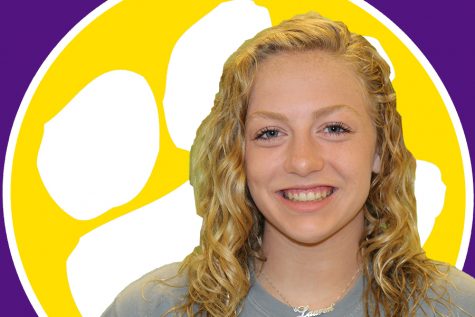
This is Lauren’s first semester on the EHS hub staff. She is a news reporter. You can follow her on twitter @ljeffEHS_hub.
Lauren is a cheerleader...
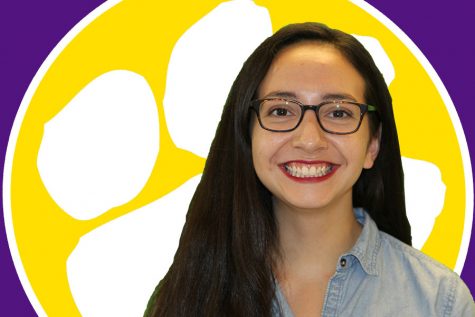
This is Katie’s fourth semester in Yearbook Production. She is the Editor-In-Chief. You can follow her on twitter @kdamesEHS_hub.
Katie enjoys baking,...














